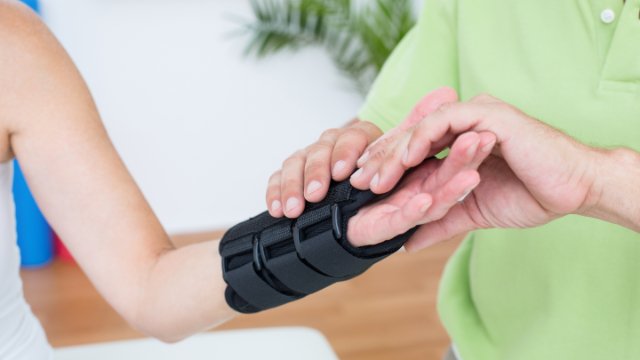You’ve had a wrist fracture, and the cast has just been removed. Now it’s time to embark on your recovery with effective wrist physiotherapy! To regain full strength, mobility, and function, it’s crucial to follow a solid rehabilitation program.
The qualified physios at Melbourne Sports Physiotherapy, with location in St Kilda, Essendon, Blackburn or Malvern East are experienced with wrist injuries and recommend five key exercises to enhance your wrist recovery after cast removal.
These physiotherapy exercises will help rebuild strength, improve flexibility and get you back to your routine following a fractured wrist. Remember to consult your physiotherapist before starting any exercise program after your cast has been removed.
Range of Motion (ROM) Exercises for a Fractured Wrist
The first step is to restore your wrist’s range of motion so it can move freely again. Begin with gentle movements and gradually increase the intensity. Here are three effective ROM exercises:
- Wrist Circles
Stand comfortably and move your wrist in circular motions. Spin clockwise for 10 circles, then switch to counterclockwise for another 10. Keep the movements smooth and if you experience any pain then reduce the size of the circles.
- Flexion and Extension
Start with your palm facing down. Slowly bend your wrist forward, bringing your fingertips toward your forearm and hold briefly before returning to the starting position. Repeat 10 times. Then, with your palm facing up, bend your wrist backward for another 10 reps, feeling the stretch in the wrist.
- Radial and Ulnar Deviation
With your palm facing down, tilt your wrist toward your thumb as far as you can without pain, hold briefly then return to neutral. Do this 10 times. Next, tilt your wrist toward your little finger and repeat for 10 more reps. Repeat this again 10 more times on each side.
Wrist Extension/Flexion Exercises
To strengthen the muscles that are responsible for bending and extending your wrist there are two effective exercises:
- Wrist Curls
Use a light dumbbell or a full water bottle for this exercise. With your palm facing up and your forearm resting on a table or your thigh, slowly curl your wrist upward, pause, then lower it back down. Repeat for 10 reps. Increase the weight as you get stronger!
- Reverse Wrist Curls
Perform the same movement as wrist curls, but with your palm facing down. Curl your wrist downward and back up to the starting position. Complete 10 reps and embrace the challenge.
Strengthening Physiotherapy Exercises for Wrist Fractures
It’s important to restore your grip strength for daily activities. Use a stress ball, therapy putty, or a soft foam ball, and start with light resistance, progressing as you get stronger. Here are two great strengthening exercises:
- Squeeze Exercise
Grip the stress ball or therapy putty as hard as you can for 5 seconds, then release for another 5 seconds. Repeat this 10 times, and as you gain strength in the wrist and forearm, try using a more resistant object.
- Finger Extension Exercise
Place a rubber band around your fingers just below the fingertips. Open your hand wide, spreading your fingers against the resistance of the band for 10 reps to target the muscles that extend your fingers.
Pronation & Supination Exercises
Rebuilding your rotational movement in the wrist is essential for recovery. Try these exercises to improve coordination and strengthen your forearm:
- Dumbbell Twists
Using a lightweight dumbbell or a full water bottle, bend your elbow at 90 degrees and rest your forearm on a table. Rotate your forearm to bring your palm up (supination) and then back down (pronation), similar to twisting the throttle of a motorcycle. Perform 10 reps in each direction.
Functional Exercises for Daily Activities
Integrating your wrist into everyday movements will enhance stability and build coordination. Here’s a functional exercise to try:
- Wall Ball Toss
Stand facing a wall and using a small, soft ball, toss it against the wall using various wrist movements—bounce, spin and catch it. Aim for 10 to 15 throws. For a challenge once you become stronger, use a smaller or heavier ball.
These initial steps following the cast removal after a wrist injury will set you in motion for a successful recovery. These five exercises will support your journey to regain strength, flexibility and full wrist function.
As with any rehabilitation process, always listen to your body, start gradually and increase the intensity over a period of time as recommended by your physio. If you encounter any unusual pain, consult your healthcare professional right away.
Stay motivated and consistent with your exercises, and soon you’ll be back to high-fives and fluid wrist movements like you were before.
Melbourne Sports Physiotherapy aims to have you moving pain free as soon as possible and live an active and fulfilling life. Their team is dedicated to you fully recovering from your wrist injury and are available for a chat on the phone or by booking an appointment online.
Image URL: https://www.pexels.com/photo/a-person-holding-own-hand-12460181/

